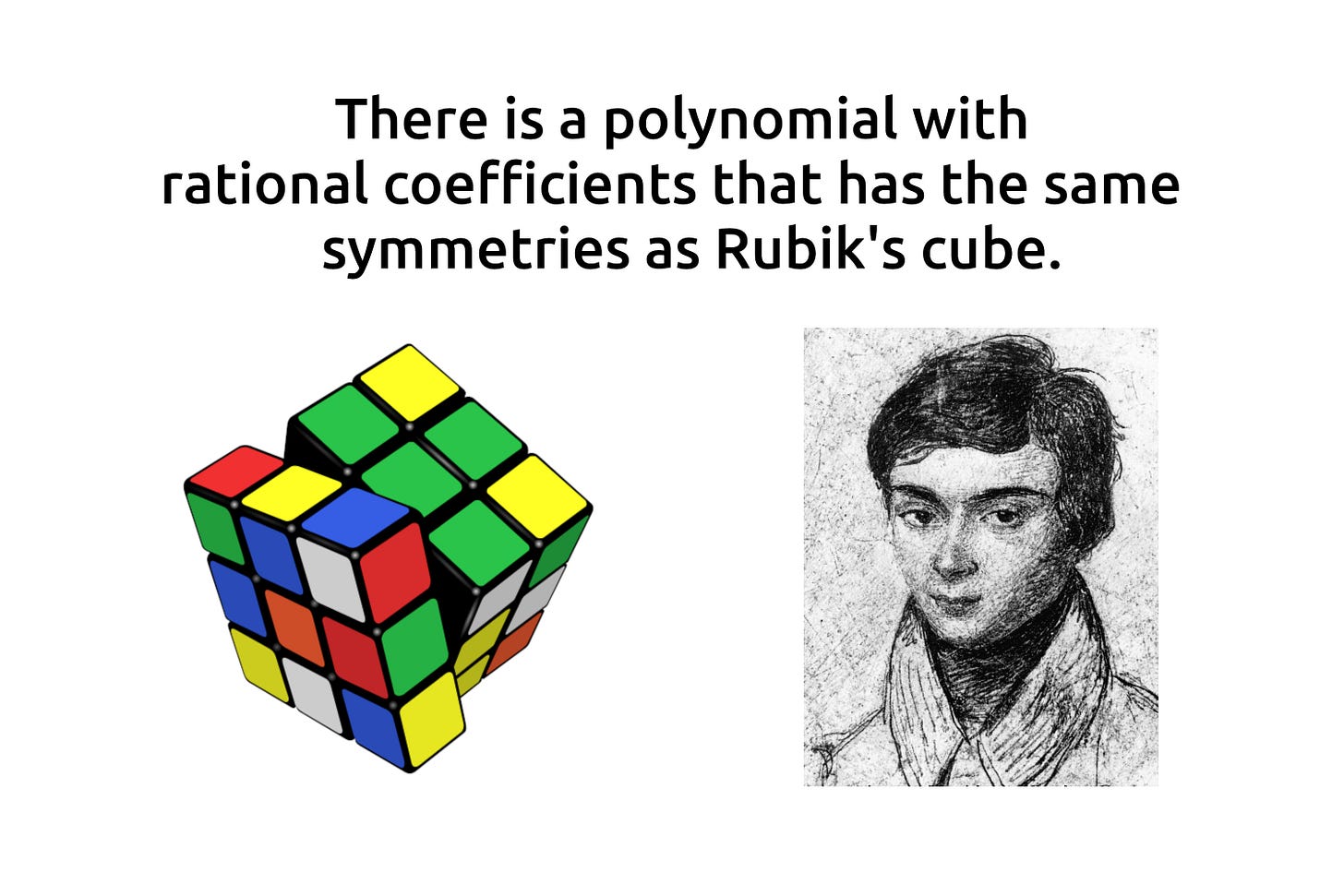A polynomial with Rubik’s cube symmetry
Rubik’s Cube is a well-known combination puzzle that was invented by Ernő Rubik in 1974. What makes the cube interesting, both as a puzzle and as a mathematical object, is the enormous amount of symmetry it has. The puzzle can be permuted in approximately 43 quintillion (4.3×1019) ways, and a stack of this many cubes would form a tower 261 light years h…
Keep reading with a 7-day free trial
Subscribe to A Piece of the Pi: mathematics explained to keep reading this post and get 7 days of free access to the full post archives.


